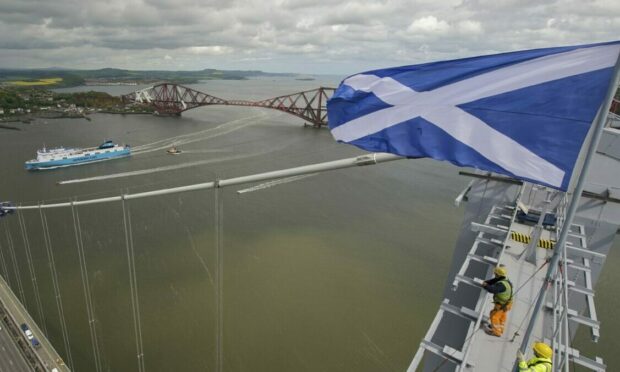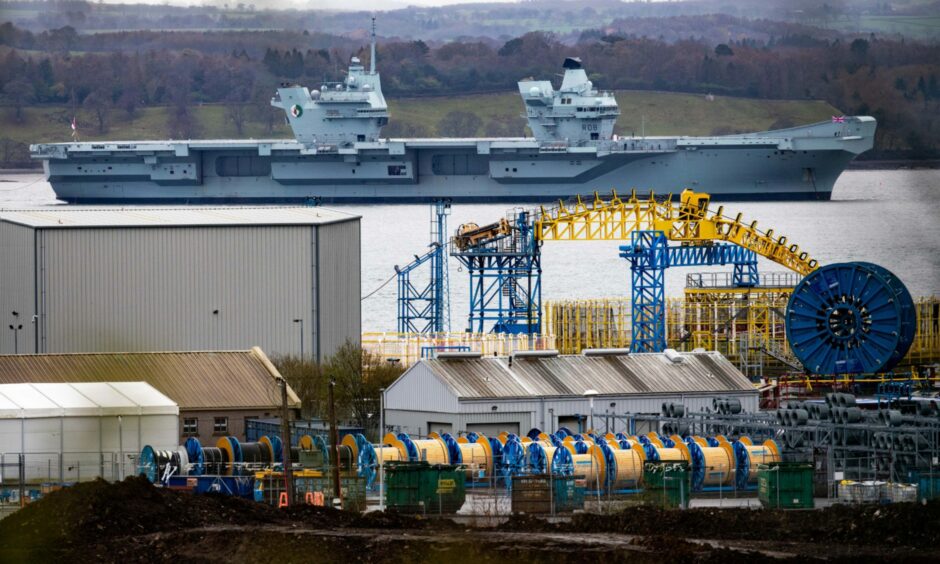Backers of the major project still think it is possible to get sailing next year – so what’s standing in the way?
Dunfermline MP Douglas Chapman visited Copenhagen last week for talks with shipping bosses in the hope of bringing back the route from Rosyth to Zeebrugge.
But the economy, Brexit border problems and infrastructure have thrown up some problems.
1 – Brexit and the border
The push to relaunch a service to mainland Europe has been talked up by the SNP as a good way to build stronger links with the continent after Brexit.
Mr Chapman is a longtime campaigner for the link and his party formally backed the proposals at their recent conference in Aberdeen.
However, he admitted problems surrounding the EU’s borders could be a snag in the process.
Next year the EU is set to bring in new fingerprint checks for anyone passing through one of the bloc’s borders.
UK port bosses have warned the new scheme could cause “significant disruption” for a “very long time”.
Earlier this summer thousands of tourists travelling to France faced lengthy waits in traffic due to border check delays.
Last year it was warned Scotland’s seafood industry needed more help to cope with disruption to trade in the aftermath of Brexit.
However, Mr Chapman insists border concerns are not a “deal breaker” for getting the service up and running.
Speaking to The Courier, the Fife MP said he believes port bosses should be able to work out a compromise.
He told us: “Hopefully by the time the ferry is good to go these problems will be resolved.
“We’re expecting some of the restrictions that would normally be on ferries not to apply in our case. We won’t be carrying a huge amount of livestock. I think we should be positive about it.”
2 – Cost-of-living squeeze
Governments and businesses alike are tightening their belts as the energy crisis bites over winter.
While Holyrood and Westminster back restoring the Belgium ferry link, government support will be limited if spending is cut.
Mr Chapman said: “While there is a lot of financial movement across the project from inflation, pressure on currencies and household budgets which may affect spending, I believe there is a strong desire on the part of DFDS to have the direct freight and passenger service up and running by early 2023.”
Questions remain over whether ferry operators can hope to make a profit from the route in the long-term when it previously failed while the economy was stronger.
The route was axed for tourists in 2010 after just eight years. Carrier firm DFDS said bookings were not good enough to continue.
The European ferry link was then scrapped as a freight service in 2018 after an onboard fire meant the operator’s losses had become too severe.
If the route was unable to thrive before, will it fare any better at a time when household budgets in Fife and beyond are being heavily squeezed?
3 – Securing a vessel
One crucial factor will play a central role in determining whether the route reopens early next year – actually finding a boat.
Mr Chapman said there were “issues” over finding available vessels and it’s not yet certain if ships will be found to sail across the North Sea.
DFDS are keen to restore the ferry link and hopes of bringing back the service got a major boost when they signed an agreement with Scottish firm Ptarmigan Shipping in June.
However, the route’s final demise in 2018 came about in part because they were unavailable to find a replacement vessel for the ship damaged by fire.
Mr Chapman is confident appropriate vessels can be found and claimed the freight services could return first if there are any difficulties procuring a ship for passengers.












